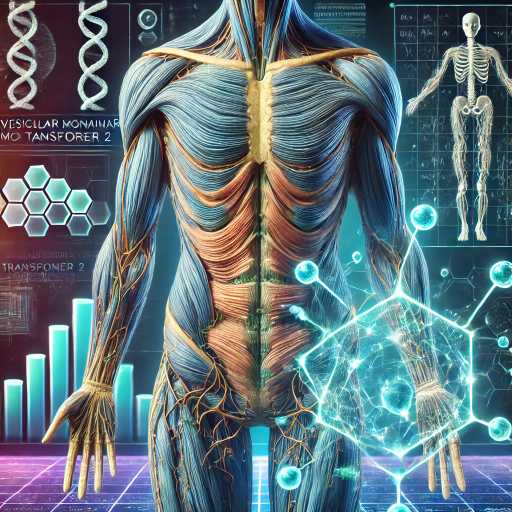Introduction:
In the realm of genetic science, the advent of Clustered Regularly Interspaced Short Palindromic Repeats (CRISPR) technology has propelled us into an era that was once confined to the realms of science fiction. CRISPR gene editing, once considered futuristic, is now a tangible reality, revolutionizing the field of medical research. This groundbreaking technique, with its minimal cost and remarkable precision, is rapidly gaining momentum in laboratories worldwide. At its core, CRISPR is a naturally occurring defense mechanism found in various bacteria, a testament to the ingenuity of nature itself. In the boundless landscape of scientific discovery, few innovations have left as indelible a mark as the advent of Clustered Regularly Interspaced Short Palindromic Repeats, or CRISPR, gene editing technology. It is a milestone that has catapulted us into an era once deemed the stuff of science fiction—a realm where we possess the power to reshape the very essence of life itself. CRISPR gene editing, once the fantastical dream of futuristic space movies, is now a tangible reality, rewriting the rulebook of medical research and offering the tantalizing prospect of a disease-free future. This groundbreaking technique, distinguished not only by its remarkable precision but also by its astonishing affordability, is swiftly gaining momentum in laboratories across the globe. At its heart, CRISPR is an ingenious biological defense mechanism, originally found in various bacteria, that now finds itself harnessed by the ingenuity of human endeavor.
CRISPR-CAS: Nature’s Genetic Shield:
CRISPR, an acronym signifying Clustered Regularly Interspaced Short Palindromic Repeats, is nature’s answer to the relentless onslaught of viral invaders faced by certain bacteria. This extraordinary genetic tool functions as a biological archive, storing the genetic blueprints of past viral assailants. When a familiar adversary launches a renewed attack, CRISPR springs into action, deploying its stored knowledge to recognize and neutralize the threat. In essence, it is a form of adaptive immunity, analogous to our own immune system, but tailored to the microbial world.
Complementing the prowess of CRISPR is a battalion of CRISPR-associated proteins (CAS), enzymatic soldiers that work in exquisite coordination with CRISPR. These CAS enzymes act as precision instruments, allowing researchers to wield the molecular scissors needed to cut and replace specific segments of DNA. The result is an unprecedented level of accuracy in genetic manipulation, opening a Pandora’s box of possibilities in the field of gene editing.
The Promise of CRISPR Gene Editing:
While we are still in the nascent stages of realizing its full potential, CRISPR gene editing shines as a beacon of hope on the horizon of medicine. With this revolutionary technology, we stand at the threshold of a new era, where diseases rooted in genetics may not only be treated but potentially eradicated at their very source.
- Inherited Ataxia: A devastating neurological disorder characterized by a loss of coordination and balance, Inherited Ataxia may soon meet its match in CRISPR. Through precise genetic corrections, patients may reclaim their quality of life.
- Duchenne Muscular Dystrophy: The relentless progression of this muscle-wasting disease may one day be halted by CRISPR’s intervention. Targeted gene editing offers the promise of preventing the devastating effects of Duchenne Muscular Dystrophy.
- Thalassemia: An inherited blood disorder defined by abnormal hemoglobin production, Thalassemia could become a relic of the past. CRISPR’s precision holds the potential to correct the faulty genes responsible, liberating individuals from a lifetime of blood transfusions and medications.
- Sickle Cell Disease: Millions plagued by the excruciating pain of Sickle Cell Disease envision a cure on the horizon. CRISPR’s ability to repair the genetic mutations underlying the disease raises the prospect of a future free from vaso-occlusive crises.
- Hemochromatosis: Excessive iron accumulation in the body burdens those with Hemochromatosis. CRISPR may offer salvation by editing the genes governing iron metabolism, averting iron overload and its associated complications.
The CRISPR-CAS System: Nature’s Own Genetic Defense Mechanism:
CRISPR, an acronym for Clustered Regularly Interspaced Short Palindromic Repeats, is an ingenious genetic tool that nature has bestowed upon certain bacteria as part of their immune system. It functions as a biological archive, storing sequences of genetic information from past viral attacks. When a hostile virus invades the bacterium once more, CRISPR unleashes its stored knowledge to recognize and defend against the assailant. This adaptive immunity, akin to our own immune system, protects bacteria from future viral threats.
Complementing CRISPR’s prowess is the CRISPR-associated proteins (CAS), a set of enzymes that work in tandem with CRISPR to achieve surgical precision in genetic manipulation. CAS enzymes are the molecular scissors, allowing researchers to accurately cut and replace specific sections of DNA, thereby opening up a world of possibilities in the realm of gene editing.
The Promise of CRISPR Gene Editing:
Although we are still in the early stages of unlocking its full potential, CRISPR gene editing holds immense promise for the future of medicine. With this revolutionary technology, we stand on the brink of a new era where genetic-based diseases can be not just treated but potentially eradicated.
- Inherited Ataxia: This debilitating neurological disorder, marked by a loss of coordination and balance, may one day find its nemesis in CRISPR. By correcting the genetic mutations responsible for Inherited Ataxia, patients could regain their quality of life.
- Duchenne Muscular Dystrophy: CRISPR offers a ray of hope to those suffering from this progressive muscle-wasting disease. Targeted gene editing could potentially halt the progression of Duchenne Muscular Dystrophy, preventing its devastating effects.
- Thalassemia: This inherited blood disorder, characterized by abnormal hemoglobin production, could become a relic of the past. CRISPR’s precision may enable the correction of faulty genes responsible for Thalassemia, freeing individuals from a lifetime of blood transfusions and medications.
- Sickle Cell Disease: Millions afflicted by this painful blood disorder dream of a cure. CRISPR’s ability to repair the genetic mutations underlying Sickle Cell Disease opens the door to a future where patients can live free from the agony of vaso-occlusive crises.
- Hemochromatosis: Excessive iron accumulation in the body plagues those with Hemochromatosis. CRISPR may offer a solution by editing the genes responsible for iron metabolism, preventing iron overload and its associated complications.
Conclusion:
The dawn of CRISPR gene editing has ushered in a new era of hope for individuals suffering from genetic-based diseases. What was once the stuff of science fiction is now a potent reality. CRISPR’s affordability and precision make it an indispensable tool for researchers worldwide, propelling us toward a future where diseases like Inherited Ataxia, Duchenne Muscular Dystrophy, Thalassemia, Sickle Cell Disease, and Hemochromatosis may be mere historical footnotes. The advent of CRISPR gene editing heralds a new era of hope for individuals grappling with genetic-based diseases. What was once confined to the realm of science fiction is now an influential reality. The affordability and precision of CRISPR render it an indispensable tool for researchers worldwide, propelling us towards a future where diseases such as Inherited Ataxia, Duchenne Muscular Dystrophy, Thalassemia, Sickle Cell Disease, and Hemochromatosis may be consigned to the annals of medical history.
As we continue to unravel the mysteries of CRISPR and refine its applications, the vision of a disease-free future comes tantalizingly within reach. With each genetic edit, we move closer to a world where debilitating disorders are mere historical footnotes, and humanity emerges healthier, stronger, and liberated from the chains of genetic disease. In the crucible of CRISPR, the blueprint of our medical future is being rewritten, offering us a chance to transcend the boundaries of genetic affliction and step into the dawn of a healthier, more promising era.
As we continue to unravel the mysteries of CRISPR and refine its applications, the prospect of a disease-free future becomes ever more attainable. With each genetic edit, we inch closer to a world where debilitating disorders are relegated to the annals of medical history, and humanity emerges healthier, stronger, and free from the shackles of genetic disease.
Revolutionizing Medicine: CRISPR Gene Editing Paves the Way for a Disease-Free Future
Tag:
#medical #research #future #drsanjayrout #future #science #technology #data #socialmedia #IoT #AI #ML #VR #robotice #nft #airdrop #idea #exponential #leadership #change #coach #psychic #quantum #time #evolution #disruption #book #thought #audio #video #viral #trends #bookstagram #world #global #law #media #management #metaverse #opensea #metamask #crypto #blockchain #IT #computer #vision
YouTube :
Social Handel’s:
LinkedIn :
https://www.linkedin.com/in/drsskro
Portfolio :
https://linktr.ee/drsskro
Facebook :
Twitter :
https://twitter.com/Drsskro
Instagram :
https://www.instagram.com/drsskro
Medium :
https://medium.com/@drsskro
Podcast :
https://anchor.fm/innovationsolution-lab
YouTube :
Quora
Blogs:
https://innovationsolutionlabs.blogspot.com
https://drsanjayrout.blogspot.com
NFT:
https://opensea.io/accounts/0xab74ab3f7c3b0ab46c82b0dc13d0b6612123d3b9
Pinterest :
https://pin.it/5Obtjq7
Behance:
Publications :
Discord
drsskro#3865
https://discord.gg/Ja5nfJQ4
Facebook page














1 Comment
Excellent and a very relevant article for most of our health needs. We can draw some valuable conclusions for implementation in our Health Surveillance program as well.